Today we wanted to quick look at the Minisforum DEG1. This is an eGPU dock built for Oculink, therefore providing more bandwidth than a typical Thunderbolt 3 dock since it is running native PCIe Gen4. We have the DEG1 that will be featured in two future reviews for the Minisforum UM890 Pro and the MS-A1 (including a particular bit for that one), so we first wanted to cover it here since it was duplicative and taking up a lot of space.
Video Version
If you want to see this in action, you can check out our Minisforum UM890 Pro review here:
We have a good section in there with the DEG1.
Minisforum DEG1 Oculink eGPU Dock Quick Look
The dock itself is fairly large. When the team first installed it, they thought it was way too big compared to other smaller options online. That largely went away as a thought after using this.
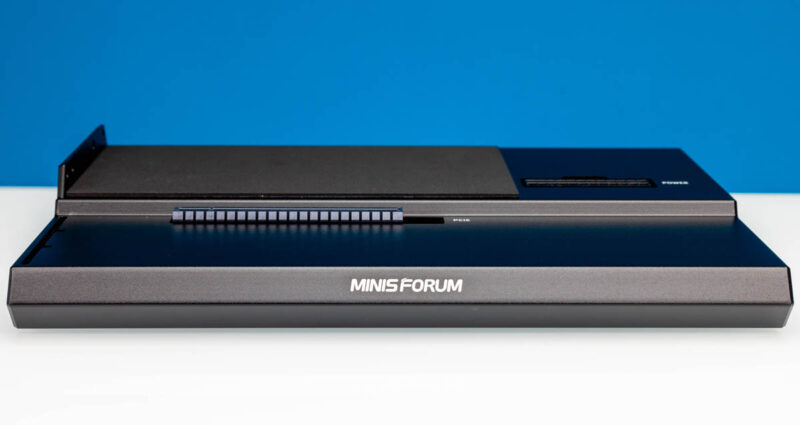
On the side where the GPU I/O and PSU power cable goes, we also get an Oculink port.
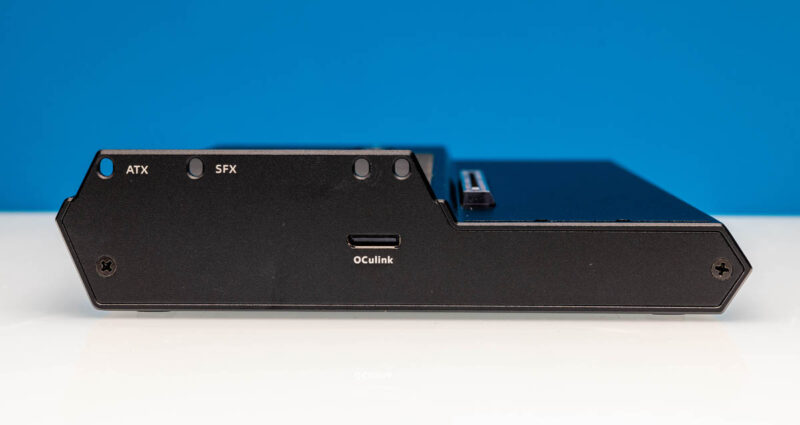
On there rear, we do not get much.
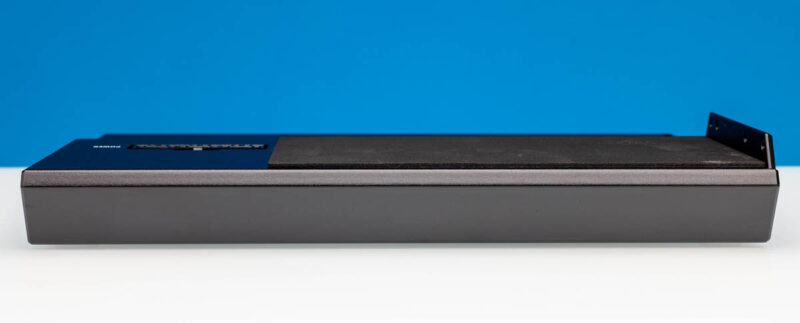
On the opposite side, we get a power button.
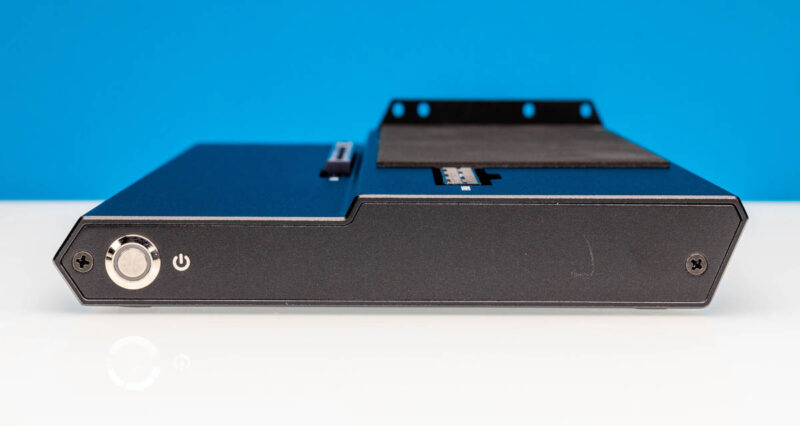
On the bottom, we get a serial number, rubber feet, and a panel. While the dock is very large, it is also sturdy even with a larger PSU and a larger GPU on it like a NVIDIA GeForce RTX 4090.
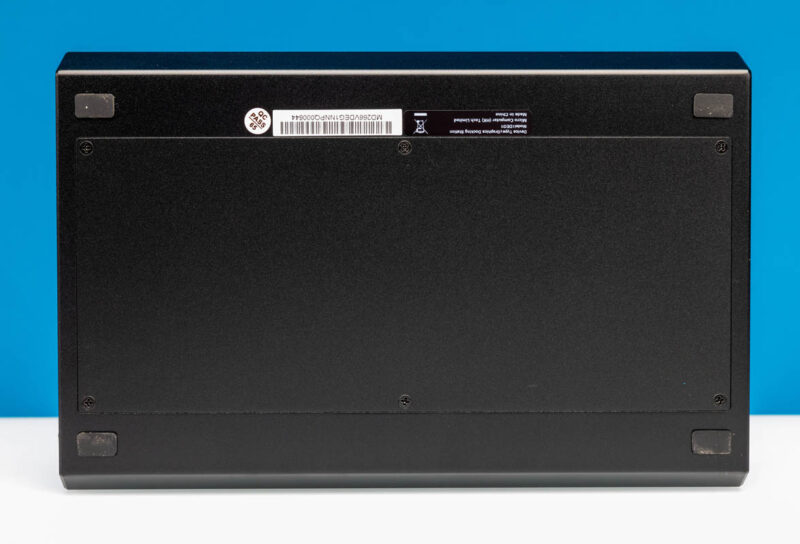
On the bottom, we have a PCB that handles the Oculink to PCIe slot as well as the power functions.
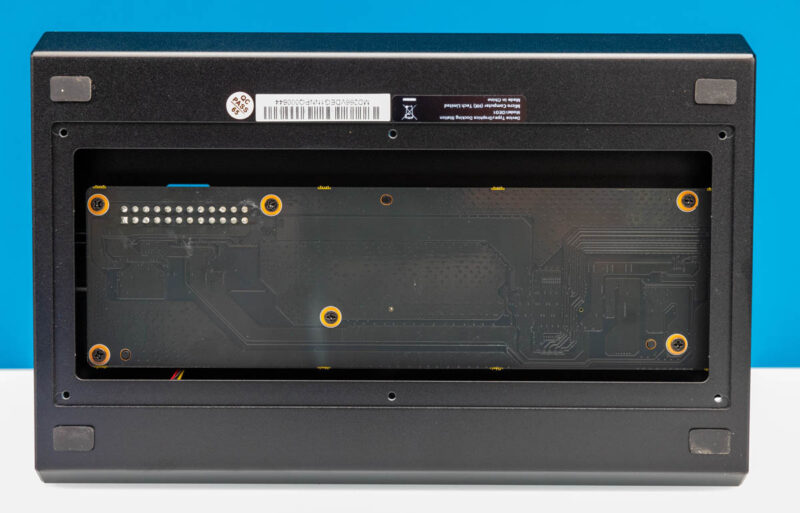
On the top, we have a a PCIe x16 slot that does not have a lock, as well as a 24-pin ATX power input.
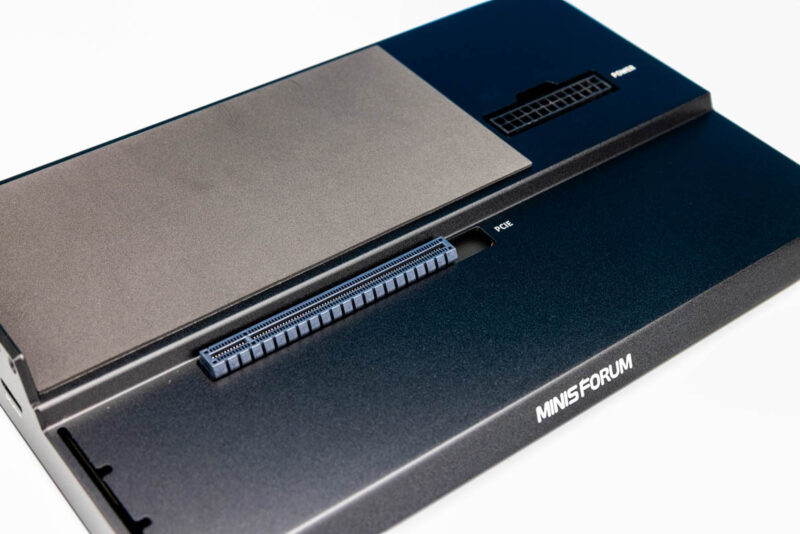
The large pad is for the power supply to rest on since that is the only support for it outside of two screws.
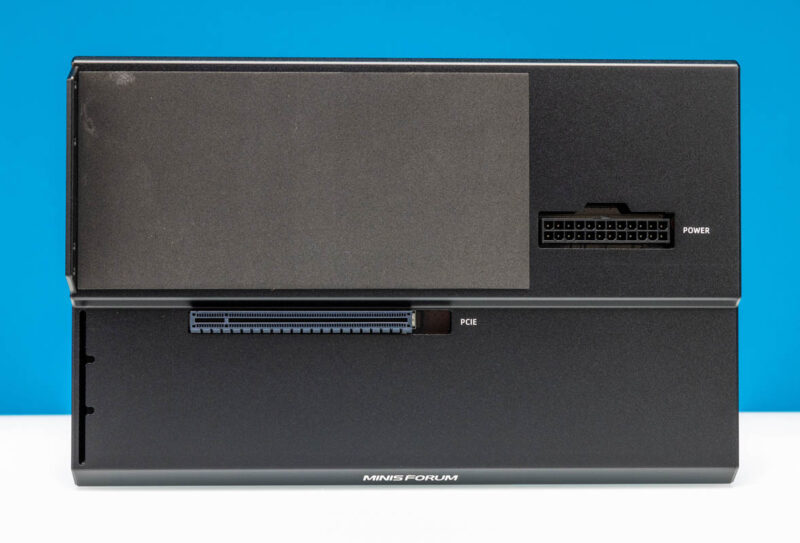
We had an EVGA 850W P2 power supply on the shelf, so it was called into action as the easiest to use for this project. 850W is too much and 500W is likely more than enough. One can also use smaller SFX PSUs.
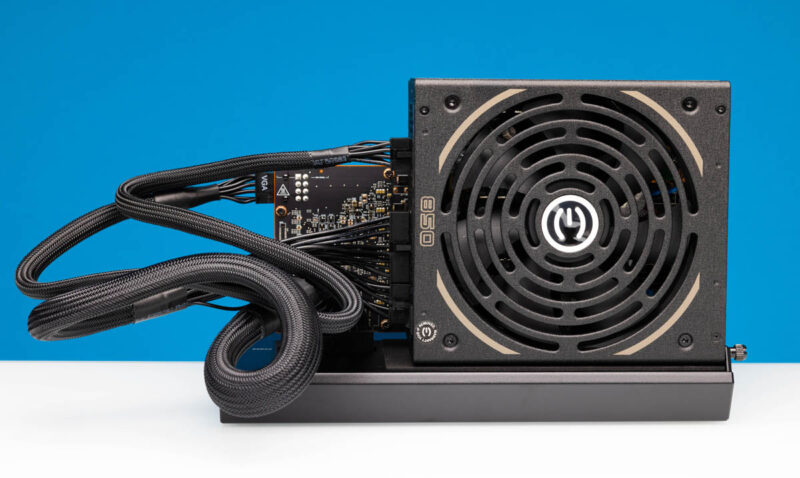
Since we need a cable to run between the PSU and the DEG1 as well as power to the GPU, we end up getting unsightly cables.
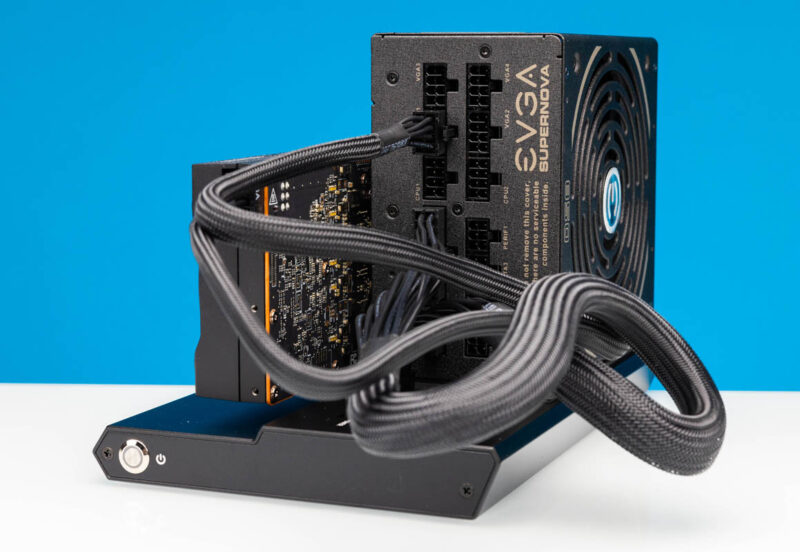
Luckily this was a modular power supply, but even with only a single power cable to the GPU, we ended up with the start of a nest of cables.
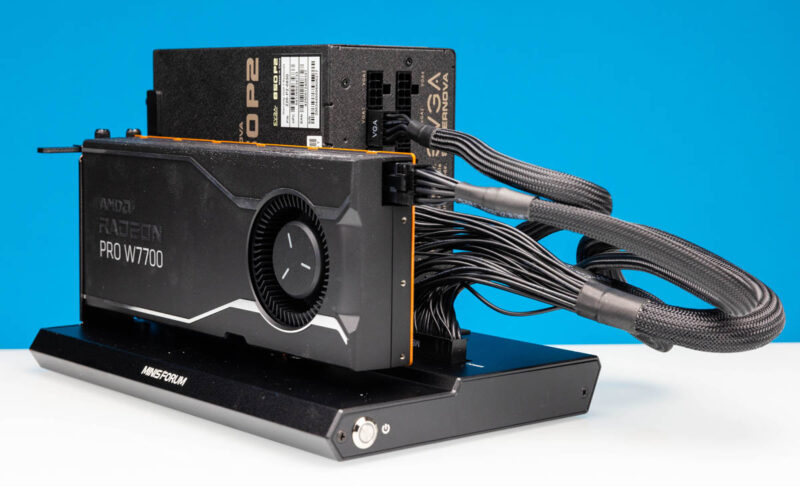
For photos, we used the AMD Radeon Pro W7700 GPU. While this was nowhere near as powerful as the GeForce RTX 4090 that we used, it was also largely silent. With the eGPU chassis, the GPU is not inside a case. In some instances, that will be better for cooling. It also means that if there is a loud GPU, it is likely loud and right next to you since it is not inside a case.
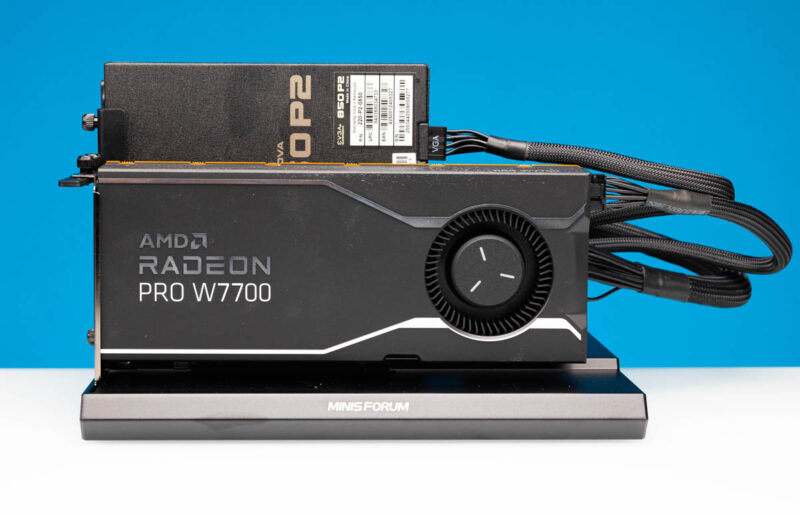
Probably the worst documented part of the process was securing the GPU. The PSU made sense with two screws on the bottom of the PSU going into the DEG1’s top. The bigger challenge until you see the picture and it makes sense is the GPU retention bracket. You screw the bracket into the top part of the PSU, then the bracket provides support for the I/O bracket of the GPU. Since the PCIe x16 slot is not locking, this is very important to secure the GPU. It also means that the DEG1’s structure is largely supported by the power supply.
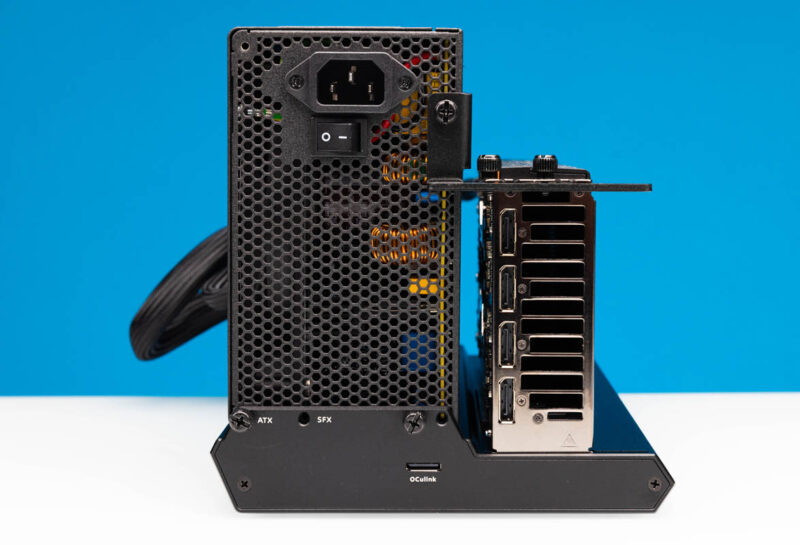
The kit also comes with an Oculink cable. This is an internal cable being used in an external fashion. Here, we can see the Minisforum UM890 Pro connected to the DEG1.
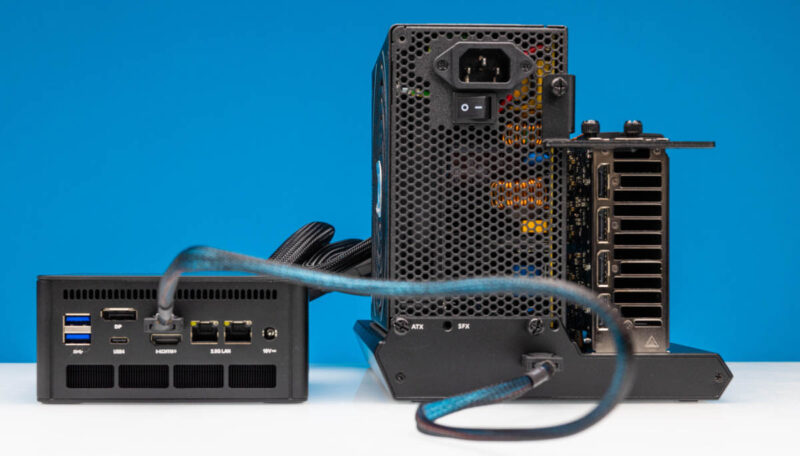
Something else that is important as a difference between this and the Thunderbolt 3 enclosures is hot-plug functionality, or the lack thereof. The general procedure to get the GPU working was:
- Turn the Oculink-capable PC off
- Ensure power to the power supply and the power supply is on
- Power on the DEG1 via the button
- Wait a few seconds
- Connect the DEG1 and Oculink capable PC using the Oculink cable. (You can also do this before step 2 from what we have seen.)
- Turn the Oculink-capable PC on
Plugging in the Oculink cable was unsuccessful when the mini PC was already running. With a Thunderbolt 3 enclosure, you can just plug the enclosure in.
Words of Caution
As a quick note, sometimes there are other issues depending on the GPU and PC you are using over Oculink, so your best bet is probably to search for the error you are getting. Many have run into these.
We also tried using a few HBAs like a SAS3008-8e, an Intel X520, ConnectX-3 Lx, and even the little card from the QNAP TL-D800S Review An 8-Bay SATA JBOD DAS and we did not have luck. We did not spend time troubleshooting, but our observation is that this worked well for eGPUs, but it did not seem to enjoy being used with other devices.
Quick Preview on Why
Of course, you probably want to know how much faster it is than built-in graphics. While the PCIe x4 link constrains bandwidth between the host and the GPU, you can get appreciably more performance. Here is a quick look at the AMD Radeon Pro W7700 in the dock.
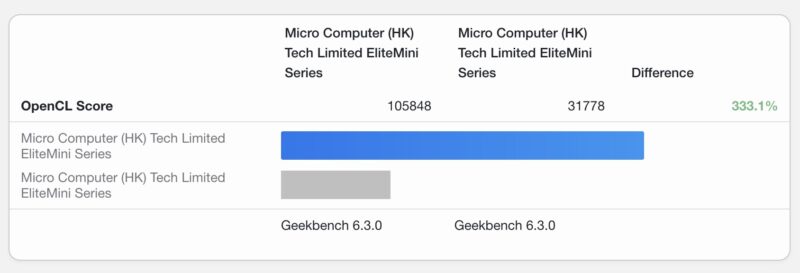
That was actually a nice setup that was also very quiet to match how quiet the Minisforum UM890 Pro was for us.
Final Words
We will have more with the Minisforum DEG1 in the future. Still, we just wanted to show it off since it will appear in two reviews over the next month or so. Hopefully, this is a good preview and a quick reference we can use later.

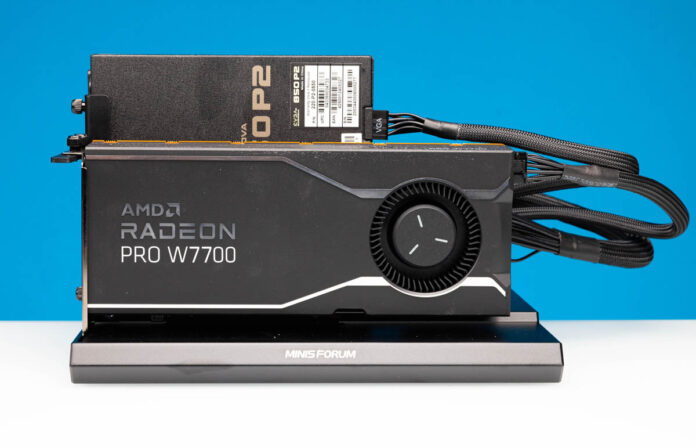
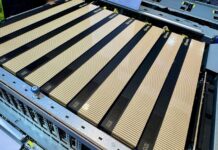
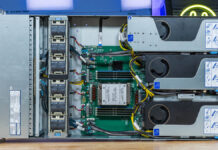
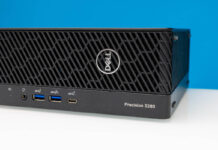
Is there anything inherently not hot-pluggable about Oculink; or is it just a slightly differently cabled take on the standard PCIe situation of it being entirely possible; but not expected or promised in consumer tier platform hardware and firmware(with most of the mini PCs and laptops that use Oculink being…very…consumer tier); while thunderbolt treats it as a mandatory case?
Good timing… I’m literally in the middle of researching both the UM890Pro and the MS-A1!
I’m currently swayed towards the UM890Pro (to be used as a normal desktop PC), so look forward to the reviews with bated breath!
@FFF Oculink was actually used as an internal interconnect medium before the current fascination in consumer devices (see a 2017 STH review as an example: https://www.servethehome.com/supermicro-x11sph-nctf-atx-storage-motherboard-review/ )
The other issue is that GPUs running over PCIe are not designed to be hot swappable by default. Even with the same cabling, it took AMD and server vendors a while to get NVMe hot-swap working on Naples.
@Chris – We also have a special version of the MS-A1 which is why we are going to be a bit behind others reviewing it. UM890 Pro ETA second half of next week.
I would be intersted in a comparison of this one and the AOOSTAR AG01 EGPU Dock with OCulink Port https://aoostar.com/products/aoostar-ag01-egpu-dock-with-oculink-port-built-in-huntkey-400w-power-supply-supports-tgx-interface-hot-swap
I’ve used one of these for a couple of weeks now, and it’s been working well. I have only two shortcomings I’ve noticed:
1 (nit): it would be nice if the rubber feet were located such that they worked when stacked on top of the MS-A1. Right now they end up outside the footprint of the mini PC.
2 (more awkward): the PCIe bus numbering is such that the OcuLink is a low bus number. So if you leave it off when you boot up, all devices are renumbered. This does bad things to device delegation into a VM guest on ProxMox, especially since the first NVMe device is the device that replaces the DEG1-connected device when this happens. Most likely fix for this would be a BIOS setting that always allocates a bus number even if nothing is connected, they already have that for other PCIe devices.
(As a side effect of (2), Linux enpXSY network interfaces get remembered too)
@Patrick; much appreciated. So Oculink should be perfectly hot-swappable in principle, just PCIe on a different connector; but the UM890 Pro is failing to do one of the fairly fiddly firmware-level things(maybe something with when enumeration does or doesn’t happen; maybe no bus padding being done to leave room for a device to appear if the Oculink is empty on boot; maybe something messy with peripheral memory allocation) that are required to make it work in practice.
I’d assume that this sort of dock is mostly not something you’d go for if you’ve got one of the server-tier platforms that use Oculink for internal cabling that probably would hotplug properly; but it would be interesting to know if there are any accessibly priced consumer level options that either support(or at least don’t hide the BIOS settings for well enough) the behavior needed for hotplug to work. Google turns up a few references to people finding boards that have the UI completely stripped out; but can be shoved into at least mostly working if you manage to set the appropriate values manually; and for hardware that actively provides an Oculink port(rather than just people trying to make PCIe to U.2 mechanical adapters work) having PCIe hotplug behave on the Oculink-exposed lanes seems like a bigger deal.
I do not have a built in oculink port on my PC so I’ve tried a couple of different M.2 -> Oculink adapters and the PC never recognized the DEG1. Are you aware of this issue or maybe I’m not following the procedure laid out above?